
As the name suggests, this rifle was first issued in 1886. Following a series of modifications (mostly to the bolt) as a result of field trials and end-user input, the primary production model was finalized in 1893, resulting in the 1886/93 nomenclature. This model was produced through World War I, and it was the primary and preferred issue rifle of the French Army. Most of the rifles available on the market today are 86/93s; an unmodified 1886 is an extremely rare bird, even in France.
Contrary to what seems to make sense, the term Lebel is derived not from the rifle’s designer, but from Lieutenant Colonel Lebel who designed the original 8mm (8x50 R Lebel) cartridge. Lebel’s first cartridge is known as Balle Lebel or Balle M. Again, unlike what you might expect, it was an odd round, being flat-nosed as a safety feature considering the 86/93 features a tubular magazine. Later Spitzer tip cartridges (most commonly encountered on the collector’s market) are by virtually any modern standard overengineered to allow the pointed bullets to rest safely against the rear of the cartridge in front without the prospect of in-magazine detonation.
Esta historia es de la edición January - February 2022 de Recoil.
Comience su prueba gratuita de Magzter GOLD de 7 días para acceder a miles de historias premium seleccionadas y a más de 9,000 revistas y periódicos.
Ya eres suscriptor ? Conectar
Esta historia es de la edición January - February 2022 de Recoil.
Comience su prueba gratuita de Magzter GOLD de 7 días para acceder a miles de historias premium seleccionadas y a más de 9,000 revistas y periódicos.
Ya eres suscriptor? Conectar

THE 'PARTNER FORCE' AK
A First-hand Look at the AKs of Afghan Commandos
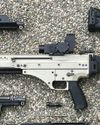
THE SCAR WITHOUT FN
The Self-Assembled Modular SCAR 17
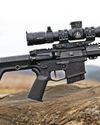
WATER DRAGON - THE GREY GHOST 6ARC DRAC
The Latest Long-Range 6ARC Rifle, Developed on the Range
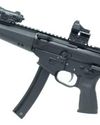
QUARTER CIRCLE 10 YKMF-5
When an MP5 Isn't

THE GOOD, THE BAD, AND THE SILENT
Tactical Cowboy by Heritage Manufacturing
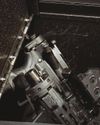
FOLDING FRONT-END FIREPOWER
AR-15 Takedown Systems for Compact Capability

CANADA'S NATIONAL FIREARMS ASSOCIATION
The NFA is Leading the Way to Fight for Gun Rights in Canuck Country

BEST OF SHOT SHOW 2022
Bear in mind that just because a product received an award doesn't mean it has our endorsement (by default everything awarded is new), but you'll be seeing more of everything you see here in these pages in upcoming issues.

BFT47 AK
Has Century Managed to Produce a Working American AK? We Put Their Latest Version to the Test
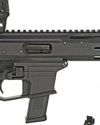
ANGSTADT ARMS MDP-9
Move Over MP5, There's a New Roller Locked Subgun in Town